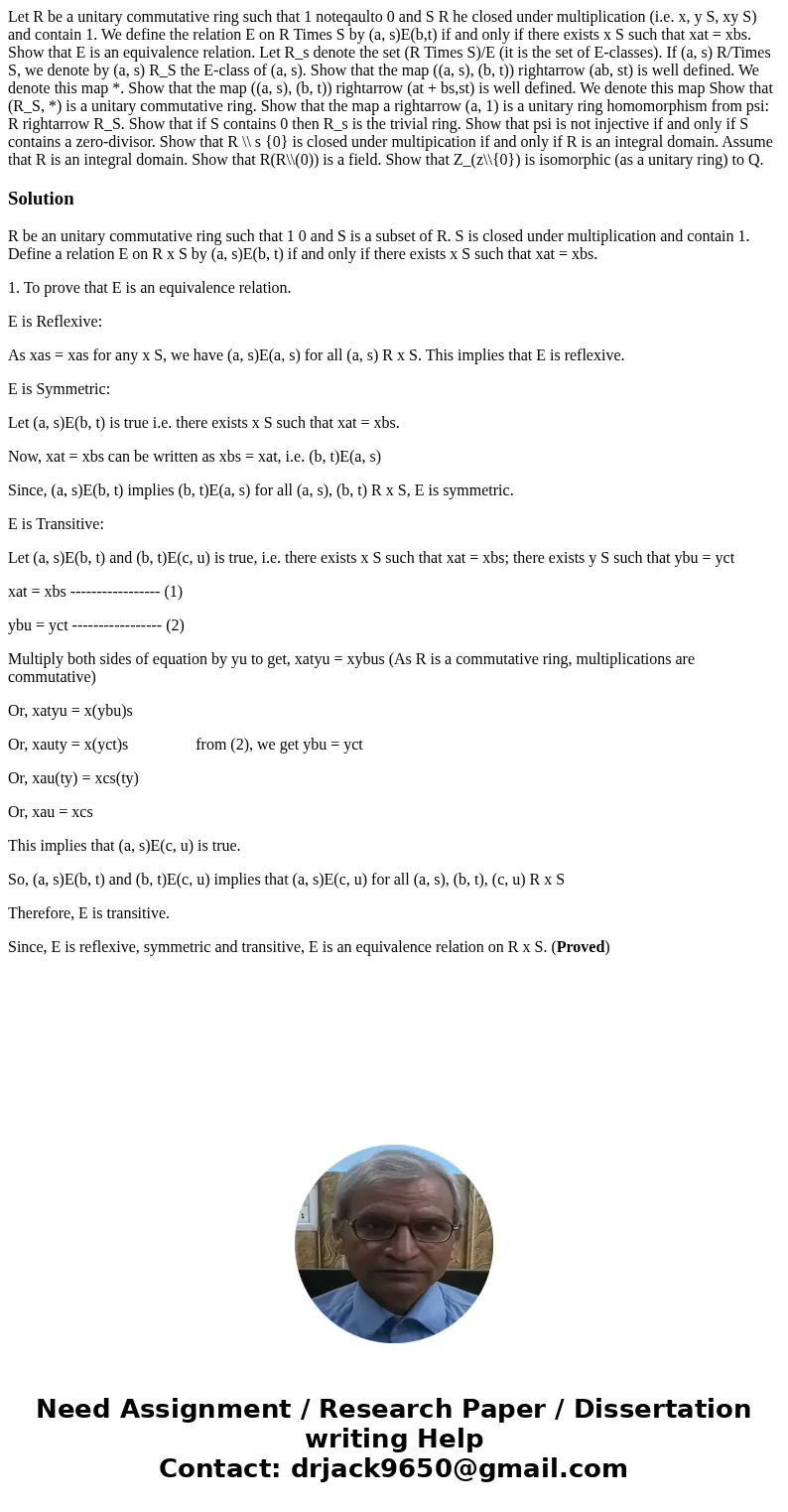Let R be a unitary commutative ring such that 1 noteqaulto 0
Solution
R be an unitary commutative ring such that 1 0 and S is a subset of R. S is closed under multiplication and contain 1. Define a relation E on R x S by (a, s)E(b, t) if and only if there exists x S such that xat = xbs.
1. To prove that E is an equivalence relation.
E is Reflexive:
As xas = xas for any x S, we have (a, s)E(a, s) for all (a, s) R x S. This implies that E is reflexive.
E is Symmetric:
Let (a, s)E(b, t) is true i.e. there exists x S such that xat = xbs.
Now, xat = xbs can be written as xbs = xat, i.e. (b, t)E(a, s)
Since, (a, s)E(b, t) implies (b, t)E(a, s) for all (a, s), (b, t) R x S, E is symmetric.
E is Transitive:
Let (a, s)E(b, t) and (b, t)E(c, u) is true, i.e. there exists x S such that xat = xbs; there exists y S such that ybu = yct
xat = xbs ----------------- (1)
ybu = yct ----------------- (2)
Multiply both sides of equation by yu to get, xatyu = xybus (As R is a commutative ring, multiplications are commutative)
Or, xatyu = x(ybu)s
Or, xauty = x(yct)s from (2), we get ybu = yct
Or, xau(ty) = xcs(ty)
Or, xau = xcs
This implies that (a, s)E(c, u) is true.
So, (a, s)E(b, t) and (b, t)E(c, u) implies that (a, s)E(c, u) for all (a, s), (b, t), (c, u) R x S
Therefore, E is transitive.
Since, E is reflexive, symmetric and transitive, E is an equivalence relation on R x S. (Proved)

 Homework Sourse
Homework Sourse